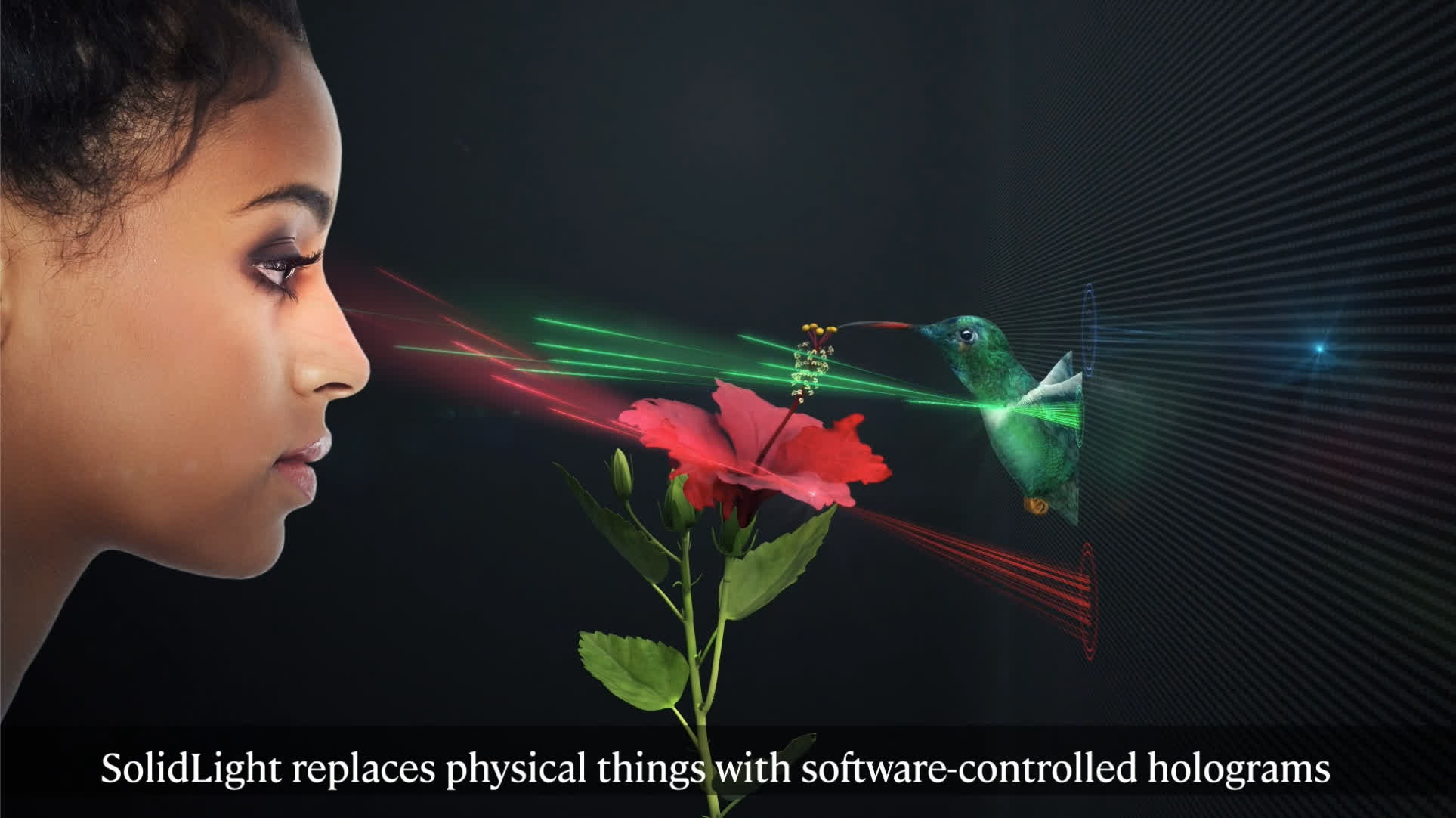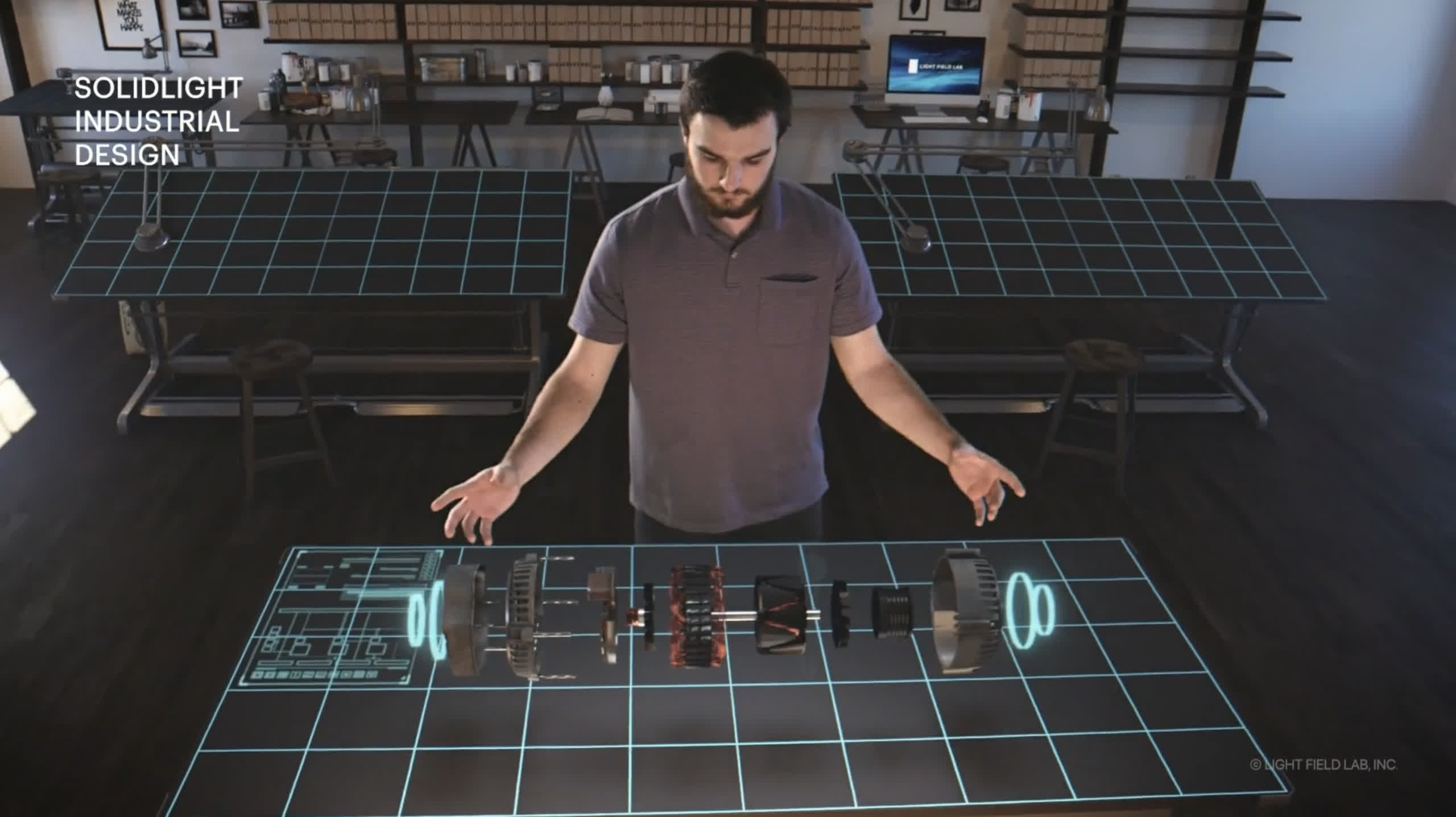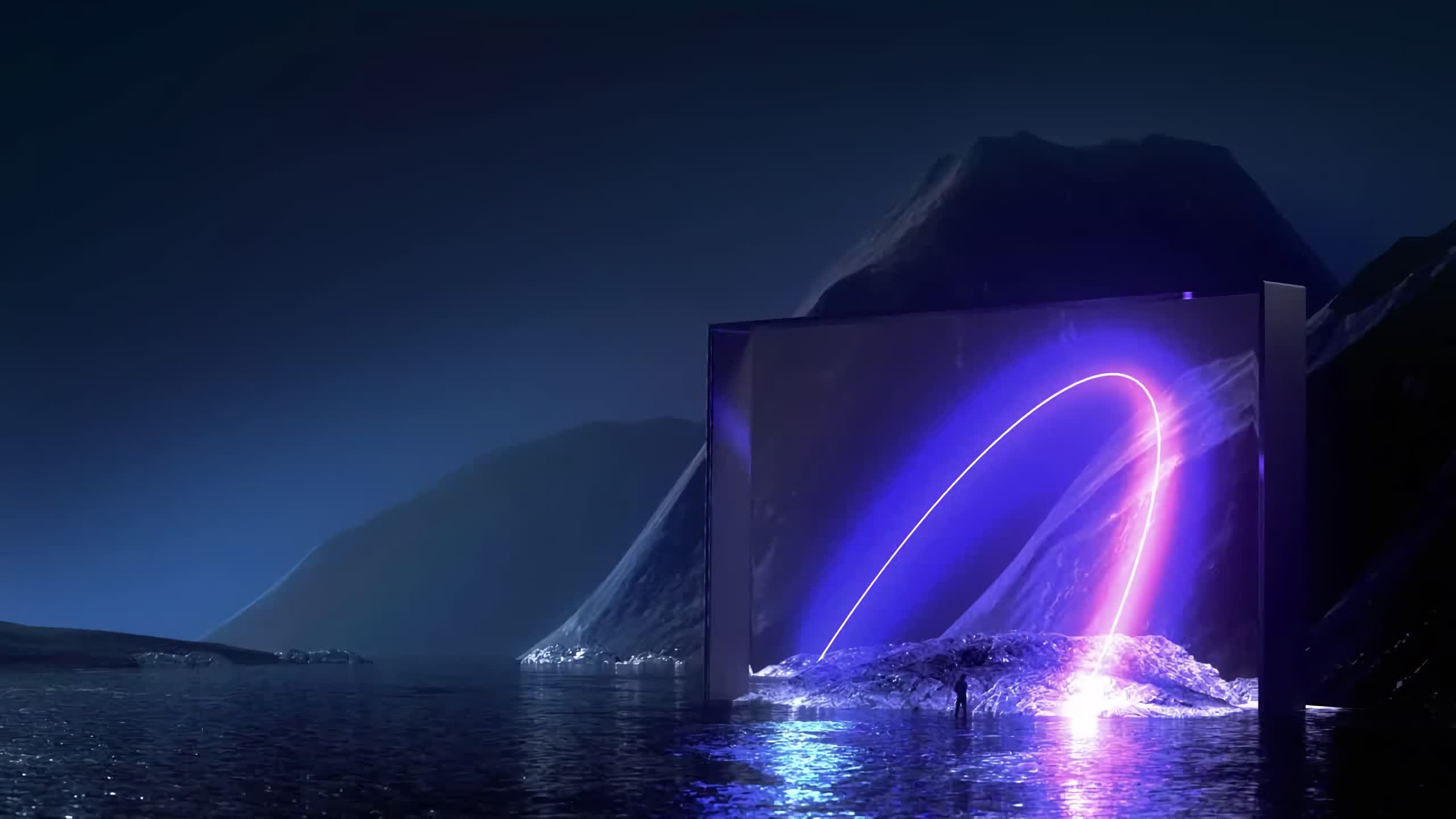The bleeding edge: If you are old enough, chances are that you have seen a wide variety of "holograms." However, they have all fallen short of the very high mark created by science fiction. A Star Trek holodeck, or even a 3D projection of Princess Leia pandering to Obe-Wan Kenobi as being the rebellion's "only hope" has yet to be realized.
A silicon valley startup called Light Field Lab aims to make true light-form objects a reality. That is to say, it has a display called SolidLight that can project a seemingly solid object without using any external mechanism or optical illusions. The technology causes light waves to interact at a precise point in physical space, which your eye can then detect.
"SolidLight is unlike anything you have experienced before," said Jon Karafin, CEO of Light Field Lab. "It's only after you reach out to touch a SolidLight Object that you realize it's not actually there. SolidLight redefines what is perceived as real, reshaping visual communications, audience engagement and customer experiences forever."

The screen has to have a ton of pixels to do this. Light Field's 28-inch display has 2.5 billion pixels. For context, that is more than 300 times the 8.2 million pixels in a 4K television. The panels are modular, so they can be linked together to create enormous wall displays with 10 billion pixels per meter.
When combined with other technologies such as hand tracking and gesture recognition, the displays could be used in various commercial and entertainment scenarios, as seen in the proof-of-concept video on the company's website. Don't let the far-out nature of SolidLight trick you into thinking this is a technology that is years out at best.

Light Field Lab was formed in 2017 and is financially backed by the venture capital arms of firms like Samsung, Verizon, Comcast, Bosch, and others. It has been working on the technology for several years, and its first round of pre-orders sold out immediately in 2019. On Thursday, it began accepting its second round of pre-orders, so it's gone beyond the point of being a simple conceptual design.
The displays are currently in preproduction but will soon move to mass production. The tech is likely to be prohibitively expensive for the average consumer. Still, we could see commercial applications used in advertising and entertainment as early as next year.
